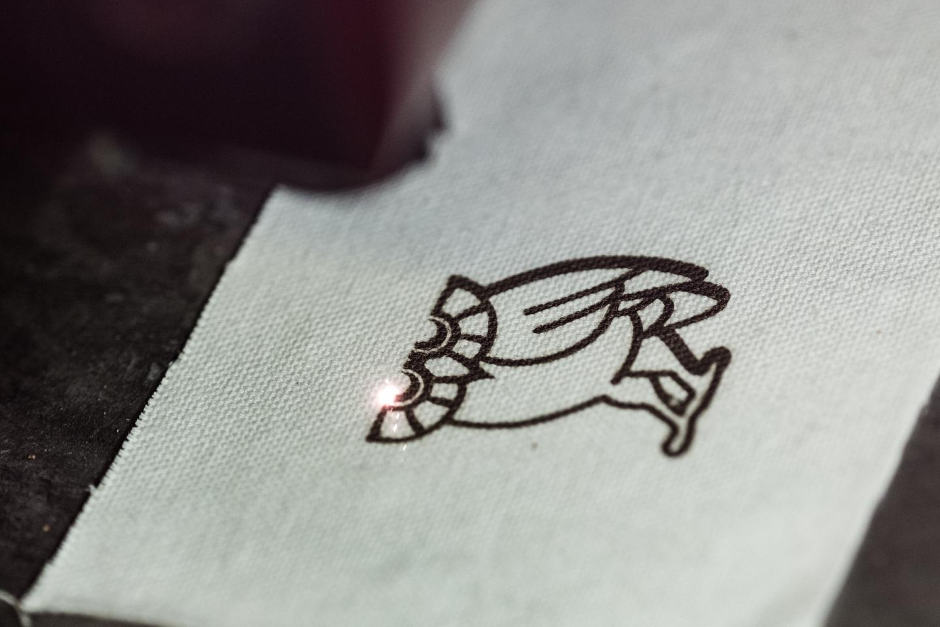
A Rice University lab uses a laser to burn graphene in the form of a Rice Owl into a piece of cloth pre-treated with fire retardant that turns the surface into amorphous carbon
The latest finding comes from the laboratory of chemist James Tour, who is investigating ways of writing graphene patterns onto food and other materials to embed devices such as conductive identification tags and sensors into products.
The new work, which is reported in ACS Nano, demonstrated that laser-induced graphene can be burned into paper, cardboard, cloth, coal and certain foods.
"Very often, we don't see the advantage of something until we make it available," Tour said in a statement. "Perhaps all food will have a tiny RFID tag that gives you information about where it's been, how long it's been stored, its country and city of origin and the path it took to get to your table."
LIG tags could also be used as sensors that detect E. coli or other microorganisms on food. "They could light up and give you a signal that you don't want to eat this," Tour said. "All that could be placed not on a separate tag on the food, but on the food itself."
Multiple laser passes with a defocused beam allowed the researchers to write LIG patterns into cloth, paper, potatoes, coconut shells and cork, as well as toast.
"In some cases, multiple lasing creates a two-step reaction," Tour said. "First, the laser photothermally converts the target surface into amorphous carbon. Then on subsequent passes of the laser, the selective absorption of infrared light turns the amorphous carbon into LIG. We discovered that the wavelength clearly matters."
The researchers turned to multiple lasing and defocusing when they discovered that turning up the laser's power didn't make better graphene on a coconut or other organic materials. But adjusting the process allowed them to make a micro supercapacitor in the shape of a Rice "R" on their twice-lased coconut skin.
Defocusing the laser quickened the process for many materials as the wider beam allowed each spot on a target to be lased many times in a single raster scan. That also allowed for fine control over the product, Tour said. Defocusing allowed them to turn previously unsuitable polyetherimide into LIG.
"We also found we could take bread or paper or cloth and add fire retardant to them to promote the formation of amorphous carbon," said Rice graduate student Yieu Chyan, co-lead author of the paper. "Now we're able to take all these materials and convert them directly in air without requiring a controlled atmosphere box or more complicated methods."
The common element of all the targeted materials appears to be lignin, Tour said. An earlier study relied on lignin, a complex organic polymer that forms rigid cell walls, as a carbon precursor to burn LIG in oven-dried wood. Cork, coconut shells and potato skins have even higher lignin content, which made it easier to convert them to graphene.
Tour said flexible, wearable electronics may be an early market for the technique. "This has applications to put conductive traces on clothing, whether you want to heat the clothing or add a sensor or conductive pattern," he said.




Red Bull makes hydrogen fuel cell play with AVL
Formula 1 is an anachronistic anomaly where its only cutting edge is in engine development. The rules prohibit any real innovation and there would be...